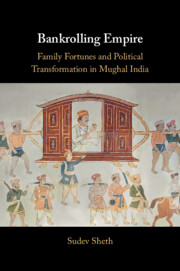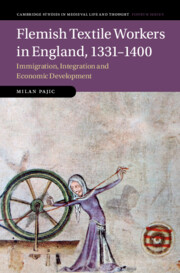Refine search
Actions for selected content:
26946 results in Economic history
4 - Military Colonialism and Economic Development
-
- Book:
- Imperial Borderlands
- Published online:
- 09 November 2023
- Print publication:
- 23 November 2023, pp 100-137
-
- Chapter
- Export citation
Contents
-
- Book:
- Imperial Borderlands
- Published online:
- 09 November 2023
- Print publication:
- 23 November 2023, pp v-vi
-
- Chapter
- Export citation
Appendix A - Supplement for Chapter 4
-
- Book:
- Imperial Borderlands
- Published online:
- 09 November 2023
- Print publication:
- 23 November 2023, pp 240-262
-
- Chapter
- Export citation
Primary Sources
-
- Book:
- Imperial Borderlands
- Published online:
- 09 November 2023
- Print publication:
- 23 November 2023, pp 272-305
-
- Chapter
- Export citation
5 - Colonial Institutions and Social Norms
-
- Book:
- Imperial Borderlands
- Published online:
- 09 November 2023
- Print publication:
- 23 November 2023, pp 138-164
-
- Chapter
- Export citation
1 - Historical States, Imperialism, and Development
-
- Book:
- Imperial Borderlands
- Published online:
- 09 November 2023
- Print publication:
- 23 November 2023, pp 1-26
-
- Chapter
- Export citation
2 - Imperialism and Extractive Institutions: A Theoretical Framework
-
- Book:
- Imperial Borderlands
- Published online:
- 09 November 2023
- Print publication:
- 23 November 2023, pp 27-65
-
- Chapter
- Export citation
Epilogue
-
- Book:
- Imperial Borderlands
- Published online:
- 09 November 2023
- Print publication:
- 23 November 2023, pp 227-239
-
- Chapter
- Export citation
Acknowledgments
-
- Book:
- Imperial Borderlands
- Published online:
- 09 November 2023
- Print publication:
- 23 November 2023, pp xi-xiv
-
- Chapter
- Export citation
7 - Beyond the Habsburgs
-
- Book:
- Imperial Borderlands
- Published online:
- 09 November 2023
- Print publication:
- 23 November 2023, pp 201-226
-
- Chapter
- Export citation
Tables
-
- Book:
- Imperial Borderlands
- Published online:
- 09 November 2023
- Print publication:
- 23 November 2023, pp ix-x
-
- Chapter
- Export citation
Figures
-
- Book:
- Imperial Borderlands
- Published online:
- 09 November 2023
- Print publication:
- 23 November 2023, pp vii-viii
-
- Chapter
- Export citation
Appendices
-
- Book:
- Imperial Borderlands
- Published online:
- 09 November 2023
- Print publication:
- 23 November 2023, pp 240-271
-
- Chapter
- Export citation

Bankrolling Empire
- Family Fortunes and Political Transformation in Mughal India
-
- Published online:
- 16 November 2023
- Print publication:
- 30 November 2023

Flemish Textile Workers in England, 1331–1400
- Immigration, Integration and Economic Development
-
- Published online:
- 16 November 2023
- Print publication:
- 30 November 2023
Part I - General
-
- Book:
- The Spread of the Modern Central Bank and Global Cooperation
- Published online:
- 02 November 2023
- Print publication:
- 16 November 2023, pp 1-102
-
- Chapter
- Export citation
4 - Institutionalizing Central Bank Cooperation
- from Part I - General
-
-
- Book:
- The Spread of the Modern Central Bank and Global Cooperation
- Published online:
- 02 November 2023
- Print publication:
- 16 November 2023, pp 80-102
-
- Chapter
- Export citation
Preface
-
- Book:
- The Spread of the Modern Central Bank and Global Cooperation
- Published online:
- 02 November 2023
- Print publication:
- 16 November 2023, pp xix-xx
-
- Chapter
- Export citation
Copyright page
-
- Book:
- The Spread of the Modern Central Bank and Global Cooperation
- Published online:
- 02 November 2023
- Print publication:
- 16 November 2023, pp viii-viii
-
- Chapter
- Export citation
1 - Interwar Central Banks
- from Part I - General
-
-
- Book:
- The Spread of the Modern Central Bank and Global Cooperation
- Published online:
- 02 November 2023
- Print publication:
- 16 November 2023, pp 3-39
-
- Chapter
- Export citation
